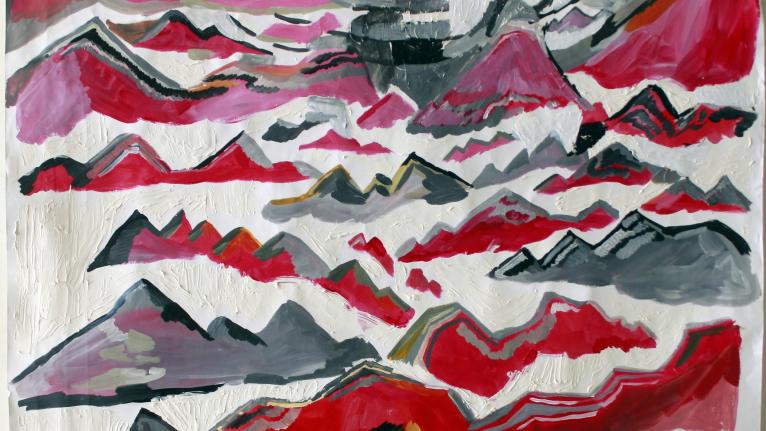In 1975, French philosopher Michel Foucault went on an acid trip at Zabriskie Point in Death Valley, California. Foucault’s trip and the effects it may have had on his theorization of sexuality have become contested intellectual history. Until recently, the only narrator of this experience was Simeon Wade, an out gay writer, musician, and history professor, who accompanied Foucault to the desert. A target of homophobia that sought to discredit him as an eccentric hippie, Wade’s position in the academy was vulnerable. In 1976, Wade produced a workbook, Chez Foucault, including original translations of the philosopher’s French lectures and interviews. This represents Wade’s remarkable commitment to pedagogy and a significant instance of the early reception and circulation of Foucault’s work in the US. Photographs, correspondence, and ephemera exhibited here, recently discovered in an Oxnard, California storage unit and acquired by the ONE Archives at the USC Libraries, attest to the credibility of Wade’s account and evidence something—but the question is, what?
Foucault on Acid takes the mythology surrounding Foucault’s California trip as a prompt to interrogate the desires we attach to history and place. Moving away from Foucault’s biography to think through his history of sexuality, this exhibition re-enters the desert scene to understand the way subjects are formed in space and time. As compelling as fantasy as it is as history, Foucault’s acid trip is engaged here to animate a set of relationships across psychedelia, ecology, the university, precarious labor conditions, and minoritarian knowledge.
Responding to Foucault’s desert archive, the exhibition presents paintings and objects by New Mexico based artist Grace Rosario Perkins. Her punk ethos and creative practice are shaped by her movement between city centers, the Navajo Nation, and the Gila River Indian Community. As an artist, storyteller, and teacher, Perkins is interested in disassembling her personal narrative and reassembling it as one that layers words, objects, signifiers, and symbolic color. Her maximalist canvases often collage and embed text into the painted surface, generating a psychedelic topography built from cultural dissonance, language, history, and autobiography. Through this matrix, Perkins brings attention to mutual aid and Indigenous centered organizing, asking, who gets to imagine the desert expanse as synonymous with freedom? From borders policed and patrolled to anti-immigrant culture wars, the desert is marked by constraint and containment mechanisms, even while it is often figured in the white colonial imaginary as open and empty—a Foucauldian lesson, to be sure. The exhibition invites exploration of how archival and desert imaginaries inform the interaction of sex and race. Across different historical junctures, the works presented here interrogate the spatial coordinates of power and fantasy and the desert expanse as a space of unfreedom and possibility.
This exhibition is curated by Jeanne Vaccaro.
Foucault on Acid is open to the public during regular business hours. To make your return as safe as possible, MASKS ARE REQUIRED regardless of vaccination status, in line with university requirements. All visitors must also complete a wellness assessment through https://trojancheck.usc.edu/login. For more information, visit https://libraries.usc.edu/fall2021
